What makes the difference between a prospect who buys from you and one who buys from your competitor? It usually comes down to trust, timing, and the content you put in front of them. In short: content marketing for ecommerce.
But it’s not just about blog posts or product descriptions. Content marketing for ecommerce is a strategic, customer-first approach to creating and distributing valuable content across search, social, and email. It’s built to attract the right audience, answer their questions, and move them closer to checkout.
It’s about visibility and relevance. Your prospects are searching, comparing, and deciding long before they hit your product page. A smart content strategy meets them where they are, builds confidence in your brand, and removes friction from the buying journey.
How do I know this? Because this isn’t my first rodeo—or my fiftieth. I’ve spent decades using content marketing to help ecommerce brands turn browsers into buyers.
In this article, I’ll break down everything you need to know about content marketing for ecommerce. I’ll also walk you through a high-converting strategy that works whether you’re launching your first store or scaling your tenth.
Originally written on April 18, 2024, this post was republished on May 21st, 2025.
In this article:
Has Your Store Lost Key Rankings?
We’ve conquered some of the most competitive D2C markets in the world – from women’s fashion to adult toys, subscription boxes to golf apparel.
If your business deserves to be on top, we’ll get you there.
Why Content Marketing for Ecommerce Is Essential
Many ecommerce businesses focus on attracting prospects with blog posts and then converting prospects with product reviews and sales pages.
That method is a great start, but powerful ecommerce content marketing lies in the “missing middle” absent from that standard practice.
After you drive traffic to your online store, you need to build trust so that your product is the only reasonable choice for your prospect.
Let’s look at how the right commerce content leads to more customers.
Increases Brand Awareness with Strategic Ecommerce Content
Potential customers often find themselves overwhelmed with choices that all look the same.
For your ecommerce business, this presents both a challenge and an opportunity. When visitors find your site, your products must immediately distinguish themselves from the competition.
Content marketing for ecommerce presents an opportunity to showcase your products in visually appealing ways that address your customers’ problems and pique curiosity about the solutions you offer.
For example, Eyebuydirect aims to stand out as the best option for prescription glasses online.

If you take a look at Eyebuydirect’s organic search positions in Semrush, you’ll see that the site ranks on Page One for the keywords:
- Glasses
- Eyeglasses
- Sunglasses
- Prescription sunglasses
- Prescription glasses

When visitors land on the site, they see options to learn more about the products through curated collections, current sales, and quizzes that help them find their next pair of eyeglasses. See more content examples for ecommerce.
Works as a Less-Expensive Alternative to Advertising
After you’ve spent time driving sales with ads to expose your products to customers, SEO and content marketing are often more affordable and can help you scale.
For example, Rothy’s is a D2C ecommerce brand highlighting “comfort, innovation, and sustainability.”

By ranking in organic search results for terms such as “flats” and “loafers,” it continually attracts consumers looking for women’s loafers and shoes within its collections.
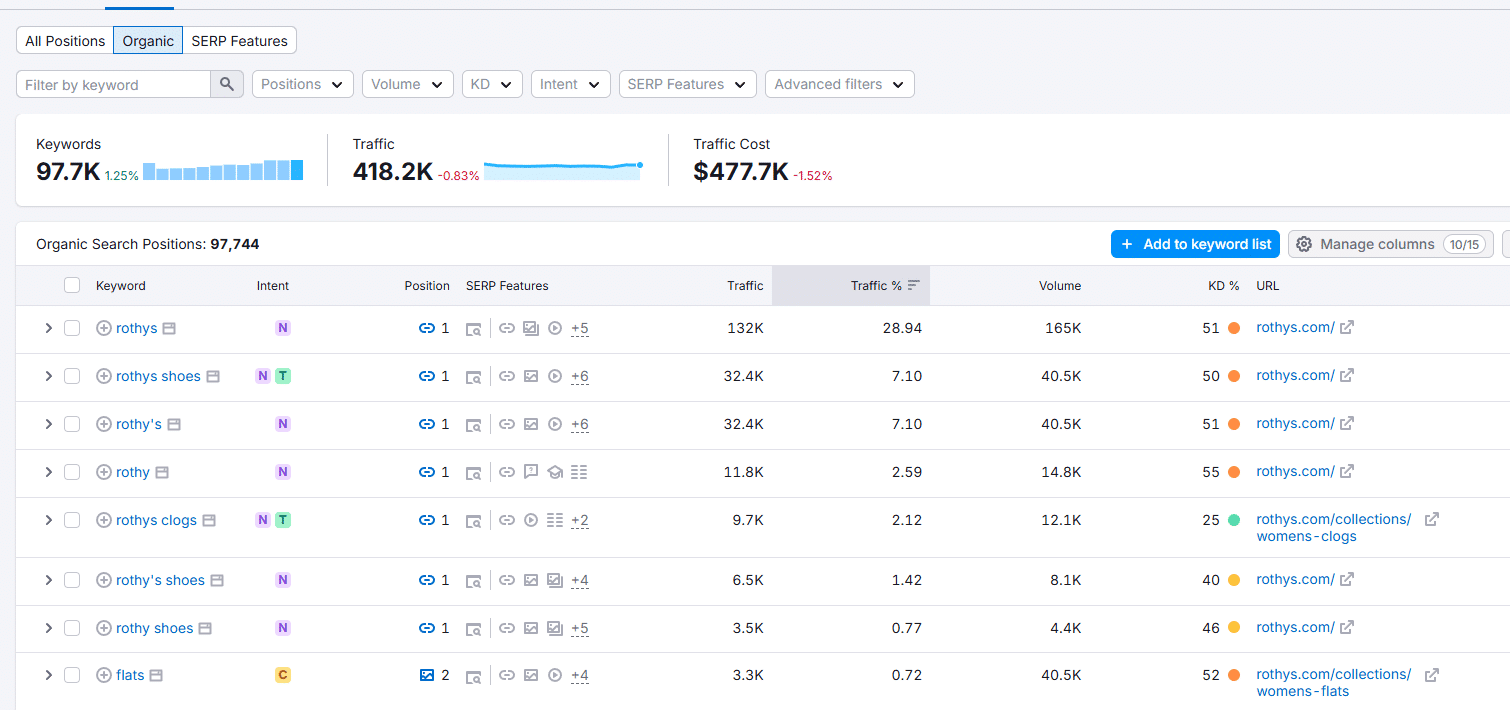
Precise copywriting like “… discover comfortable, washable shoes made for life on the go” provokes visitors to click on individual styles to learn more about the benefits of each product.
Drives Consistent, Long-Term Traffic
What happens when you stop paying for ads for your online store?
Traffic stops.
Ecommerce content marketing helps you think long-term and drives consistent traffic to your site continuously.
Here’s an example from DoggieLawn, an ecommerce website that sells natural grass pads for dogs.

DoggieLawn captures valuable search traffic by ranking for highly specific keywords:
- Dog lawn
- Doggie grass
- Dog grass pad
This targeted approach attracts customers searching for indoor or balcony solutions for their pets.
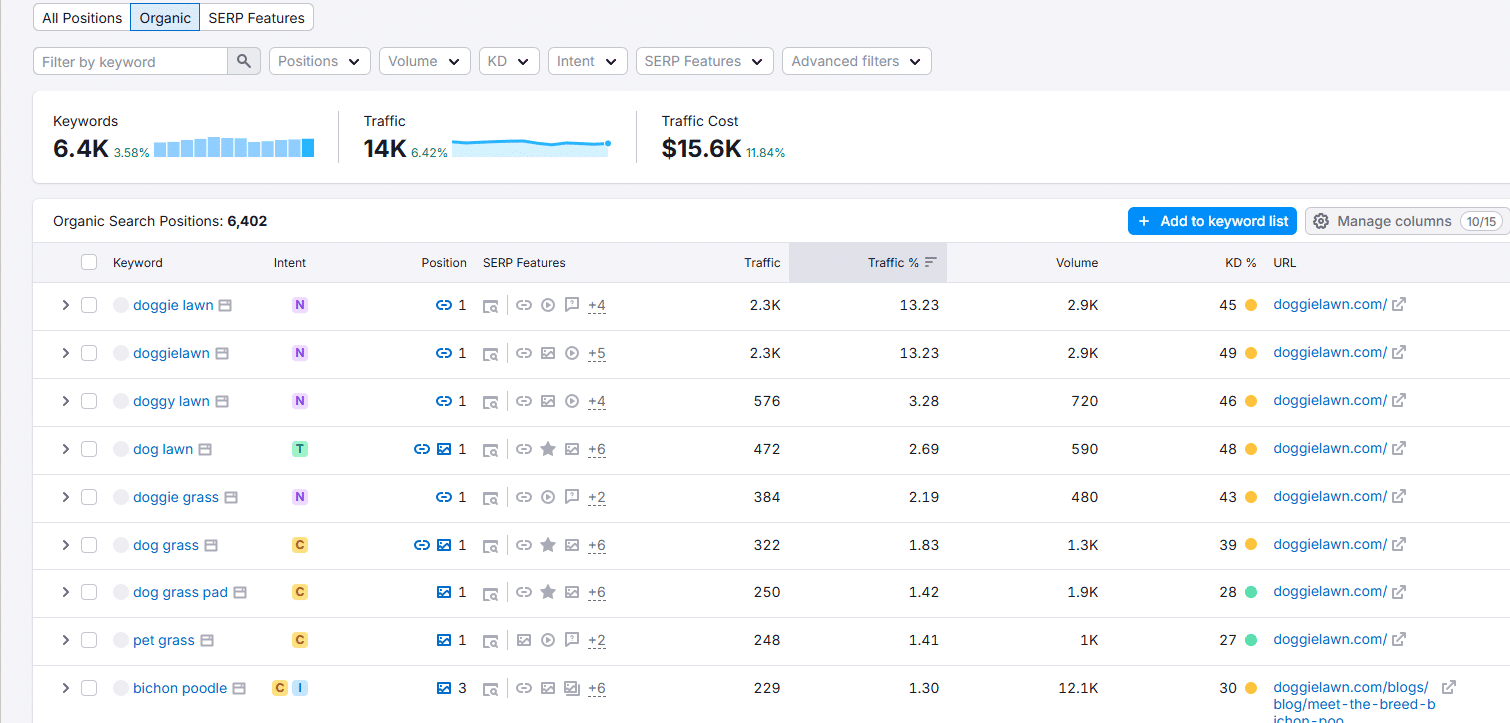
Refreshing this targeted content over time will help the company remain a top choice for prospects looking for this type of solution for their pets.
Generates More Sales From Targeted Traffic
With ecommerce content marketing, you have a direct line of communication with your target audience. It’s your chance to distinguish your brand by resonating with their needs.
For Poly & Bark, this means owning the tagline, “The Internet’s Favorite Sofas.”

The brand ranks in organic search results for the terms “leather couch” and “leather sofa.”
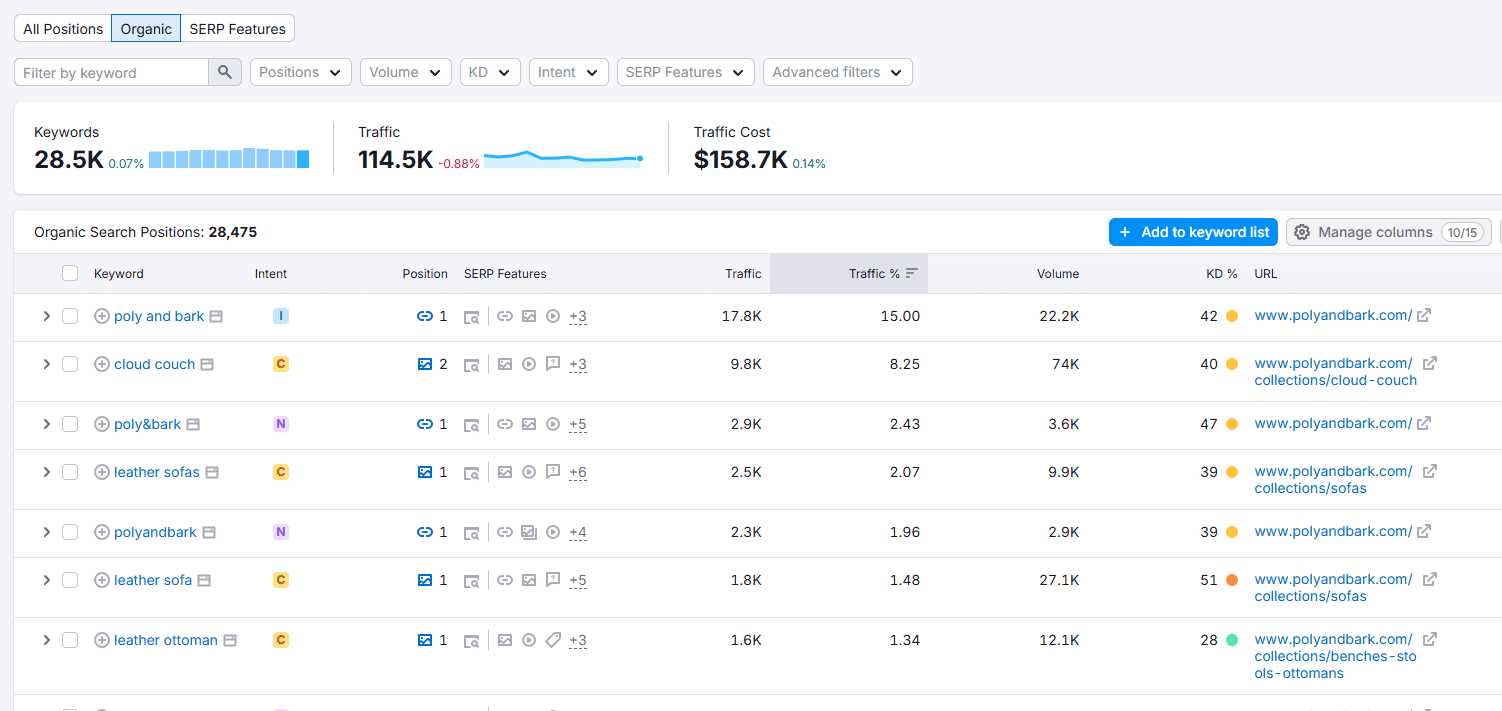
Those pages display Poly & Bark’s leather collections and its free returns policy that encourages visitors to try a piece of furniture at home for 100 days.
Establishes Your Website as an Authority
Attracting prospects is just the beginning.
Your content must capture attention immediately, welcome visitors to your online store, and create clear pathways to discover your products.
Check out Seven Sons’ Learning Hub, which promotes its mission, values, and best practices.

Potential customers need more than just answers; they need assurance they’re in the right place.
Seven Sons ranks in organic search results for terms such as “grass fed butter” and “grass fed meat” …

… and the company also provides proof that it doesn’t take website visitors for granted.
If prospective customers have found Seven Sons because they want high-quality, grass-fed meat safely delivered to their door, Seven Sons clearly demonstrates that its products are a great choice.
What Is a Content Strategy for Ecommerce Websites?
A content strategy for ecommerce is a game plan for turning your content into traffic, trust, and sales.
It should support your bottom line by answering key questions like:
- What content builds buyer trust?
- Where do customers need help deciding?
- Which formats best match your products and customer behavior?
This system maps content types to the buyer journey and creates assets that attract, educate, and convert. From helpful guides that pull in traffic to persuasive product content that nudges purchases, every piece serves a clear role.
This approach works because it’s tailored. We identify the real gaps in your customer’s journey and build content to close them.
Here’s how that breaks down.
The 3 Core Types of Ecommerce Content Strategy (And Why Each Drives Revenue)
To effectively attract and convert your target audience, your ecommerce content strategy should include a balanced mix of three core types of content.
Here’s a quick overview of each type, why they’re essential, and how we leverage them.
Educational Content
Educational content is one of the most powerful ways to attract and nurture customers early in their journey. Why is it so effective? Because it answers the questions buyers ask before they realize they’re ready to purchase.
For example, Seven Sons doesn’t just discuss its products.

It publishes strategically targeted articles explaining the difference between grass-fed and grain-fed beef, how sustainable farming works, and why it matters. This approach positions them as the definitive information source in its market, elevating them above competitors.
Educational content isn’t just about SEO; it’s about making your brand the obvious choice by being genuinely helpful.
Inspirational Content
Effective inspirational content doesn’t just show off your products; it creates a vision of the life your customers want.
When people can picture themselves using what you sell and imagine a better version of their day because of it, they’re much more likely to engage, click, and buy.
A great example is Cuyana, a premium women’s fashion brand that excels at this kind of storytelling. Through minimalist photography, editorial-style blog content, and real customer spotlights, it communicates how its “fewer, better” pieces fit into everyday routines.

Its content actively invites the customer into a lifestyle.
In addition to ecommerce content marketing, influencer and social media marketing are great channels to extend lifestyle-driven content’s reach and emotional impact.
A well-placed Instagram reel or creator collaboration can reinforce the same message your site is sending: this product belongs in your life.
Conversion-Focused Content
Once you’ve built trust and created desire, conversion-focused content removes obstacles and creates frictionless paths to purchase.
Printfresh is a standout here. Its product pages are clean, fast, and informative. It includes sizing guidance and user-generated reviews that address common questions before a shopper asks them.

Its comparison charts also help buyers understand key product differences, reducing decision fatigue.
Conversion content doesn’t rely on aggressive sales tactics. Instead, it systematically eliminates doubts, preemptively answers objections, and builds confidence in the purchase.
7 Elements From a Sales-Driven Ecommerce Content Marketing Agency
Now let’s explore essential elements of sales-driven ecommerce content marketing.
These seven factors help transform your creative ideas into content that leads to more conversions.
1. Focus on the Buyer’s Journey
Understanding your buyer’s journey helps you craft an effective ecommerce content marketing strategy.

You know the heart of your online store is your Bottom of Funnel content, like:
- Conversion-focused product pages
- Case studies
- Reviews
- Testimonials
- Product comparisons
But regularly blogging with Top of Funnel content is also a proven way to attract customers at earlier stages of their journey.
This creates multiple opportunities to position your brand as the definitive solution, each with clear pathways to conversion.
Even if your site visitor isn’t ready to buy yet, encourage them to sign up for your email list so you can continue educating them about your products in their inbox.
2. Use Your Brand’s Voice
How much have you developed your brand’s voice?
A consistent voice that resonates with your target audience is a key element of ecommerce content marketing.
A consistent, distinctive voice transforms casual browsers into loyal customers who genuinely connect with your brand. This creates a competitive advantage that competitors struggle to replicate.

For example, Rothy’s brand voice uses the language its customers use, with copy like “In our sunshine era.”
3. Craft Evergreen Resources
Evergreen content helps establish your brand as an authority in your niche, which increases the chances of your online store becoming a go-to resource.
Eyebuydirect answers frequently asked questions to help prospects feel confident about buying prescription glasses from the ecommerce site.
Here’s the company’s Fit & Style Quiz.

Plus, they have educational guides about:
- How to read a prescription
- How to buy glasses online
- Frames & face shapes
- Pupillary distance

Evergreen resources are also an element of ecommerce content marketing that helps you plan for the future. You can target terms that are gaining popularity so you rank for them early on.
4. Help Prospects Benefit From Your Products
Blog posts can answer common questions at all stages of the marketing funnel, and videos can also show prospects how to use your products and demonstrate benefits.
For Shopify content marketing specifically, creating demonstration videos that highlight unique features and showcase product benefits provides a significant competitive advantage in conversion rates.
DoggieLawn prompts visitors to watch a video at the top of its homepage with the call to action, “Watch the video … It’s living grass!”

When you click on the video, text superimposed on top of the video thumbnail says, “DoggieLawn is your dog’s backyard in a box!”
The 43-second video quickly identifies a prospect’s issues and presents DoggieLawn as the perfect solution.
Here’s an example from Poly & Bark.

The simple visual demonstrates how the company has shortened the traditional supply chain. As a result, Poly & Bark customers get big savings.
5. Show Happy Customers
Customers want to see that your products help people just like them. People with the same problems, questions, and preferences.
For example, the review section of Seven Sons’ site keeps its ideal customers in mind with headings that build trust, such as “Trusted by 14,000+ Families / 4.9 rating out of 2555 reviews.”
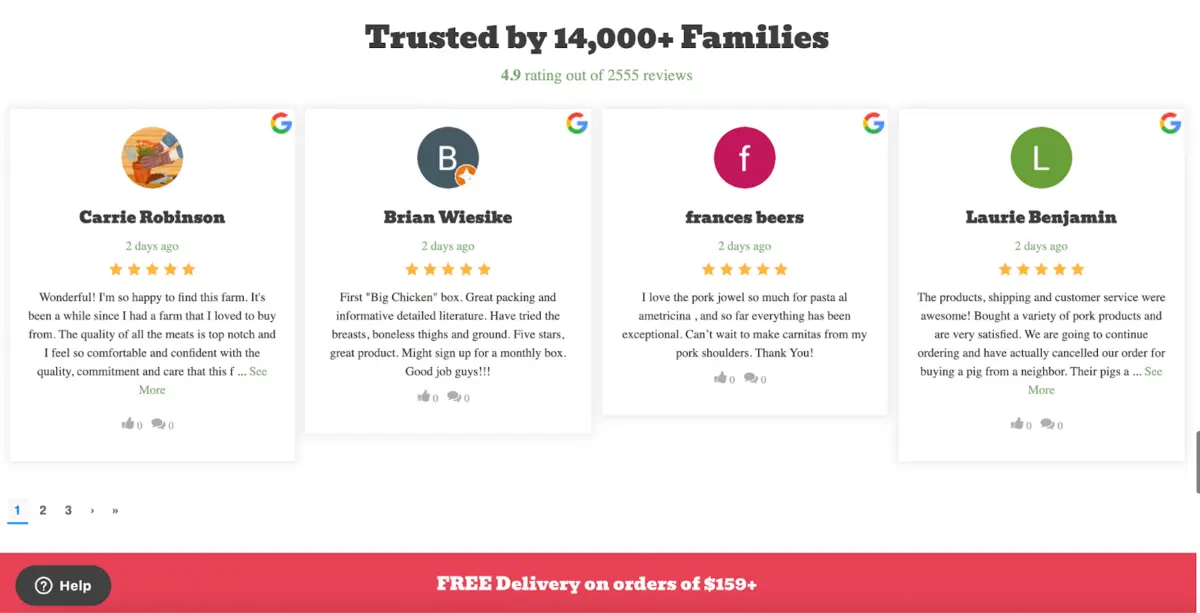
Strategic post-purchase emails that request specific feedback and reviews strengthen customer relationships and generate powerful social proof that drives future sales.
Also, make it easy for customers to share your product pages on social media if they want to mention where they’re shopping.
6. Discover the Best Medium for Your Brand
Where does your audience hang out online?
- YouTube
- Blogs
- X
- TikTok
It’s likely a combination of these platforms, where potential customers learn about products that might interest them.
So, decide on your ecommerce content marketing priorities, whether it’s threads on social media, educational tutorials on your blog, or engaging videos.
For instance, Poly & Bark focuses on Instagram more than YouTube to grow its design-focused audience.
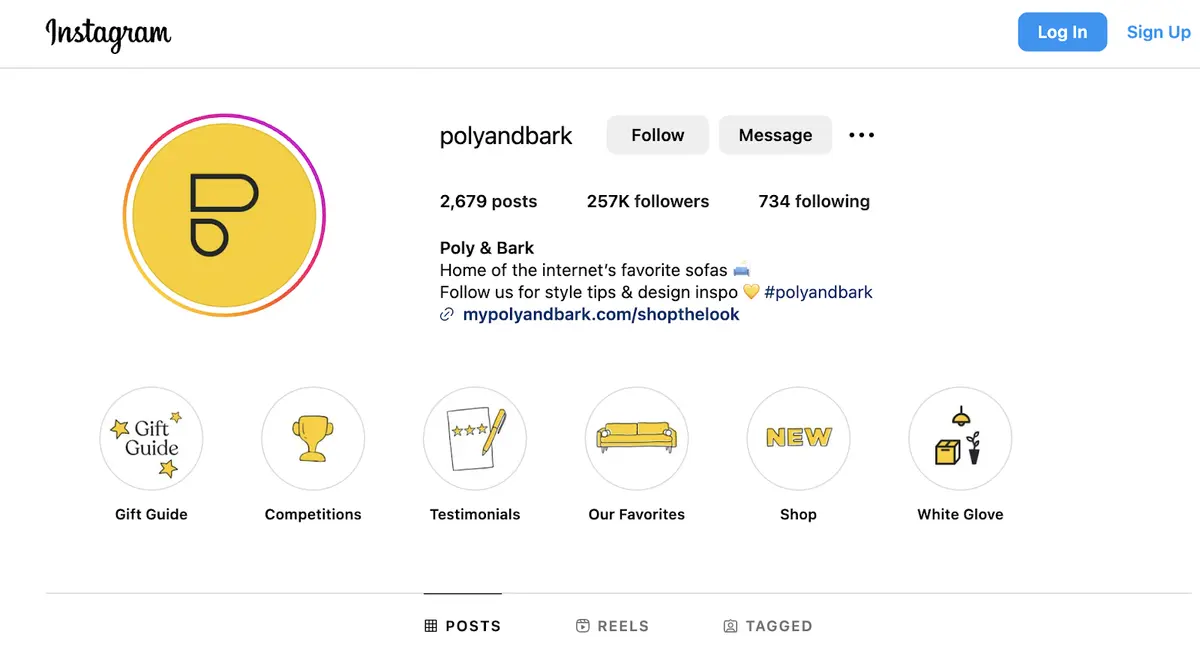
7. Partner with Related Businesses
Complementary businesses are the ultimate win-win in ecommerce content marketing.
For example, Rothy’s has partnered with the water brand Evian on Instagram to reach more people who it thinks would be a great fit for both of its products.
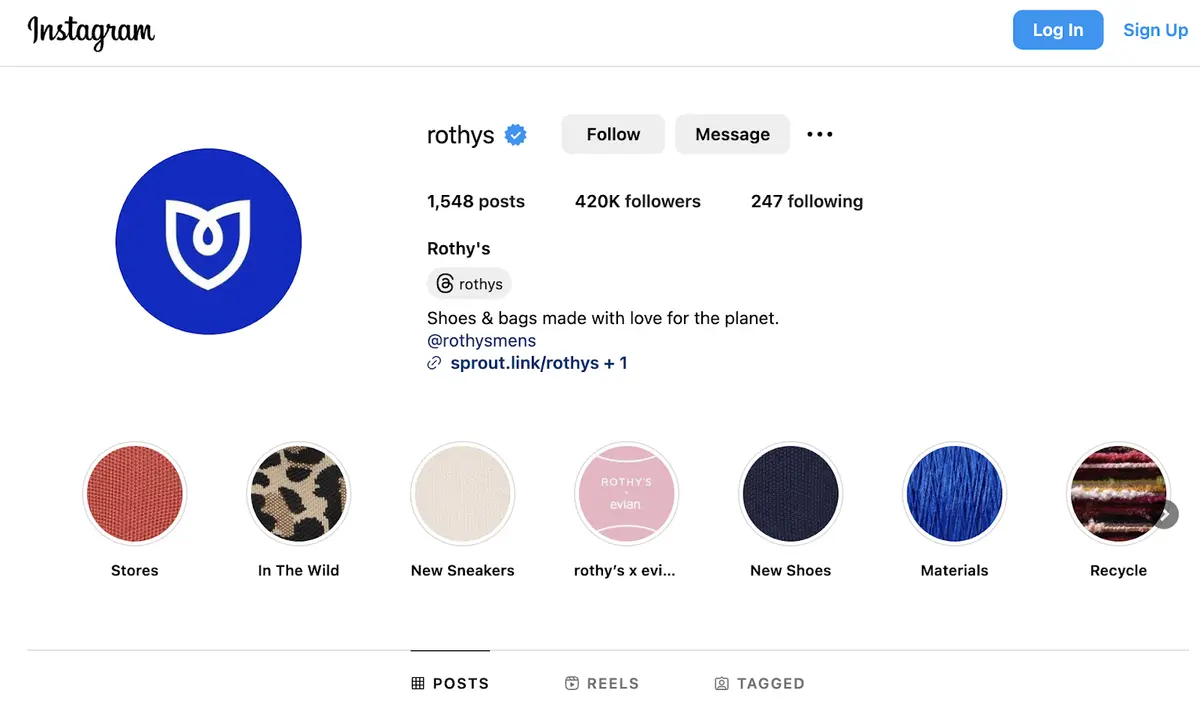
Rather than solely competing against direct competitors, partner strategically with businesses in complementary niches that share your target customers’ values and interests.
Content Marketing for Ecommerce Examples
Content marketing isn’t just about publishing blog posts and hoping for the best. When done right, it drives real traffic, builds trust, and directly impacts revenue.
Here are a few examples of how we’ve used strategic content marketing to deliver serious results for ecommerce brands.
Seven Sons: Building a Farm-to-Table Ecommerce Success Story
We implemented a focused strategy with Seven Sons: leverage content marketing to directly increase ecommerce revenue.
We executed a comprehensive SEO strategy featuring educational content about sustainable farming practices, supply chain transparency, and the health benefits of grass-fed beef.

We didn’t just write blog posts—we created a library of useful, trust-building resources that spoke directly to its customers’ questions and concerns.
Over time, its organic traffic surged, and ecommerce revenue grew by 121% year-over-year. The content wasn’t just filling up a blog but driving real, meaningful business growth.
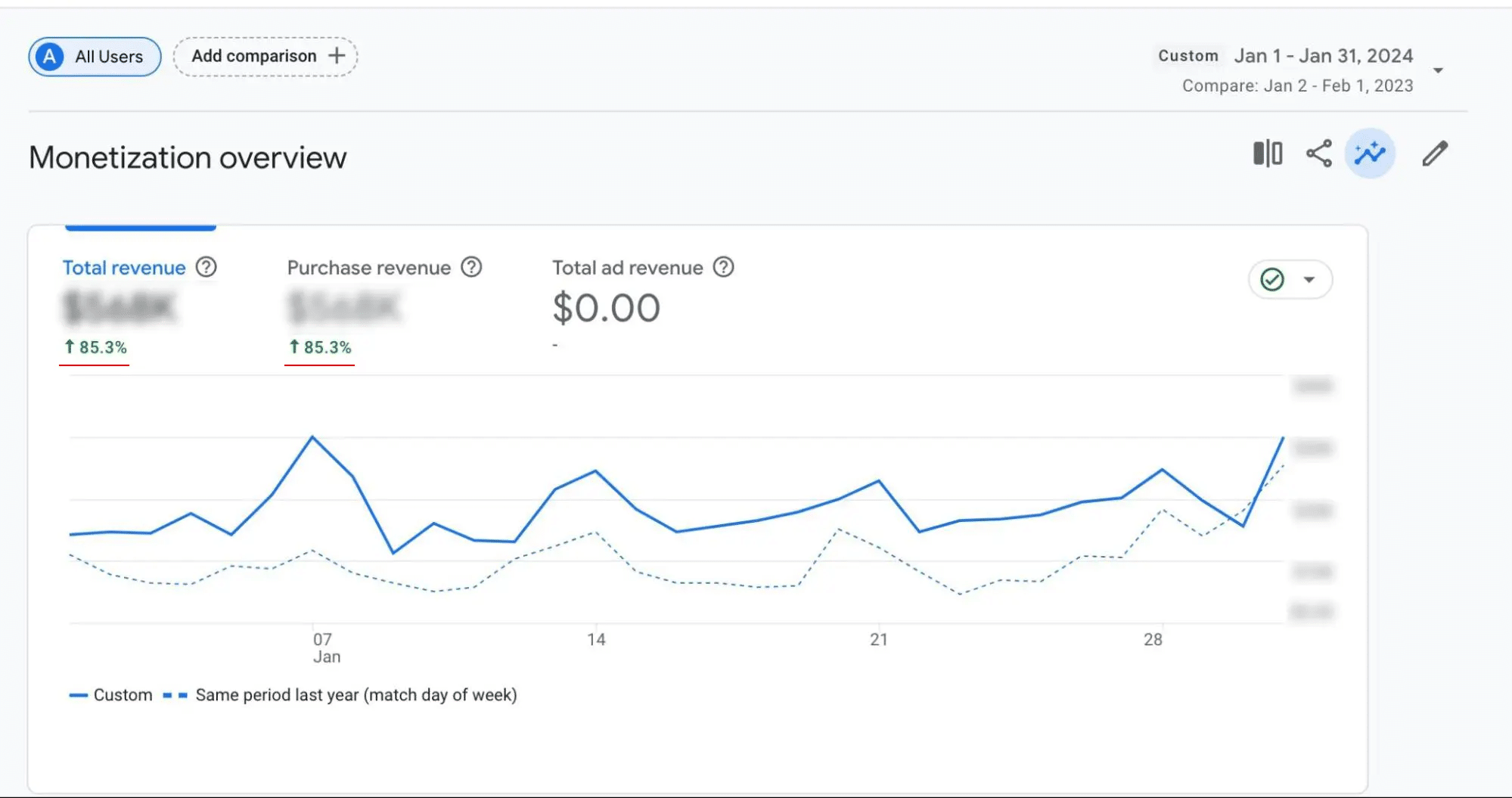
Pedaal: Educating Customers at Every Step of the Journey
Another brand worth mentioning is Pedaal, a bicycle ecommerce store.
Through their extensive content library, Pedaal offers cyclists everything from detailed bike-buying guides to maintenance tips and gear recommendations.

What sets Pedaal apart is how seamlessly its content integrates with the customer journey. While it ranks well for high-value cycling keywords, its strategy does more than simply boost SEO.
Pedaal’s articles actively guide cyclists through complex purchasing decisions, proactively address concerns, and deliver an educational experience that builds confidence at each interaction.
This kind of intentional, customer-centric content acts like a silent salesperson helping potential buyers move closer to a decision, without feeling overly promotional.
Their content also connects deeply with the cycling lifestyle. Many of their articles explore how bikes fit into real-world routines, from commuting and cargo hauling to long-distance travel across Europe. Through travelogues, cultural commentary, and urban cycling advocacy, Pedaal turns product use into a lived experience.
10 Steps to Create an Effective Content Marketing Strategy for Ecommerce for Your Online Store
Your online store is unique, so to design a customized ecommerce content strategy that drives sales, we need to start with some questions.
- Who buys your products?
- What resonates with them the most?
- What does the buyer’s journey look like?
Let’s look at 10 steps that will guide you through our ecommerce content marketing agency’s process.
Step 1: Identify Your Target Audience
Your target audience will drive most of your decisions about your ecommerce content marketing plan.
After all, these are the people you serve with your products.
By leveraging user behavior analytics, social listening tools, and targeted survey feedback, you’ll uncover the specific pain points, preferences, and purchase triggers that matter most to your customers.
You can create personas for different types of people in your audience that will match up with the different types of conversion content you create.
Step 2: Research Competitors
Competitive research often provides key insights into what kind of content will work best for your online store.
More importantly, it reveals critical content gaps and untapped opportunities that allow your brand to capture high-intent traffic that your competition has missed.
For our clients, we use tools like Semrush and Ahrefs to identify at least three relevant ecommerce competitors and their top keywords.
- Which pages on their sites get the most traffic?
- What type of pages rank?
- How do they write about topics to persuade customers?
After we answer these questions, we better understand what type of content will be viable to compete for powerful keywords. Plus, we’ll then be able to identify new or under-explored keywords.
Step 3: Perform Extensive Keyword Research
Keyword research for ecommerce content marketing includes finding relevant topics for your:
- Product category pages
- Product sub-category pages
- Product descriptions
- Informational blog posts
- Evergreen guides
Your content must mirror the exact language and search patterns your customers use when researching products in your category—this alignment directly impacts conversion rates.
A successful keyword strategy will attract more customers and help your online store stand out as an industry leader.
Step 4: Analyze User Intent
Four main categories summarize user intent from a search query:
- Informational
- Navigational
- Commercial
- Transactional
Unlike other types of businesses that focus most on informational searches to educate prospects, ecommerce sites need to prepare for all types of user intent.
The right content that satisfies search intent helps potential customers easily find what they need. The goal is to create an online store that’s easy to understand and navigate.
Step 5: Create Ecommerce Writing Guidelines
Your ecommerce writing guidelines will combine all the research you’ve already performed.
A content style guide for your writers helps them create valuable, SEO-friendly content in your brand voice. It’s time to address your audience’s needs and interests on a deeper level.
Writing guidelines will shape your:
- Behind-the-scenes content about how your products are made
- Social media captions
- Product descriptions
- Product care tips
- How-to content
These guidelines ensure every customer touchpoint delivers a consistent brand experience that builds recognition, trust, and purchase confidence.
Step 6: Set Up an Editorial Calendar
The strength of your ecommerce content strategy lies in consistent, incremental changes to your site.
An editorial calendar provides a clear picture of:
- Upcoming content
- In-progress projects
- Important tasks
We use Asana to stay organized. Other options include Notion, Trello, and Monday.
Effective editorial calendars don’t require complexity, they need strategic alignment with your business goals and enough detail to maintain consistent execution that drives results.
Step 7: Build Content Hubs

Content hubs will neatly organize your ecommerce site, and mind-mapping tools can help you visualize the online store’s navigation.
Sometimes your product category pages simply display what you have to offer, and sometimes you’ll deep-dive into certain subjects that help convert prospects.
Strategic implementation of schema markup, meta tags, and user-generated content creates pages that satisfy search engines and deliver compelling shopping experiences.
Step 8: Produce SEO Content
Ready for a quick primer on SEO content?
- On-page SEO focuses on your website content that addresses customers’ pain points and solves problems.
- Off-page SEO focuses on building awareness of your brand through mentions on external websites.
Starting with on-page optimization creates the necessary foundation for effective off-page strategies. Link-building delivers maximum ROI only when directing traffic to pages optimized for conversion and retention.
The benefits of ecommerce SEO encompass all aspects of your business, from traffic and lead acquisition to broadcasting your voice and brand message. And it all converges back down to your bottom line.
Step 9: Choose Platforms for Content Distribution
Extend your brand voice to the platforms you choose for content distribution.
Once you’ve identified your customers’ favorite places to spend time online:
- Share links to content that supports your ecommerce store
- Offer a lead magnet to build your email list
- Post reviews or testimonials
Your distribution platform choices must amplify your core content strategy while maintaining consistent messaging that reinforces your unique market position.
Step 10: Measure Results with Ecommerce Business Performance Reports
Just like any ecommerce SEO campaign, regularly monitor your KPIs such as:
- Organic traffic
- Keyword rankings
- Pages per session
- Conversion rate
- Average order value
You also want to continually monitor your competitors and relevant data in your market to adjust your strategy as needed.
These performance reports pinpoint areas you can improve to drive more traffic, engagement, and sales.
Ready to Transform Your Ecommerce Content Strategy?
Tailored, consistent SEO and content marketing services will attract visitors to your online store … and help you convert more visitors into loyal customers who buy from you again and again.
We work with clients who:
- Want an end-to-end SEO partner: From writing articles to technical SEO, our ecommerce content marketing agency covers it.
- Can invest in the long-term: We work with fewer clients and then go all-in for them.
- Believe in better communication: To implement your ecommerce content marketing effectively, we need to talk.
Ready to create content that drives traffic to your site and converts visitors?
Learn more about our Ecommerce Content Marketing Services!

